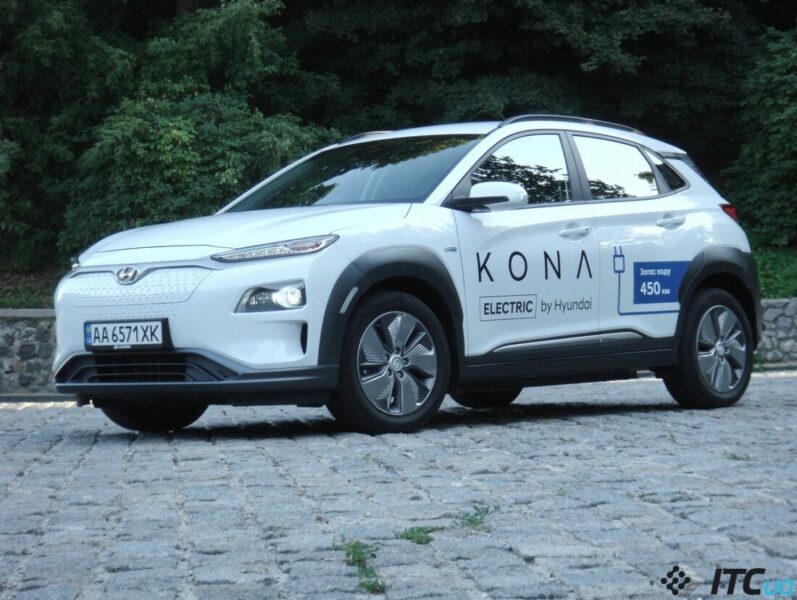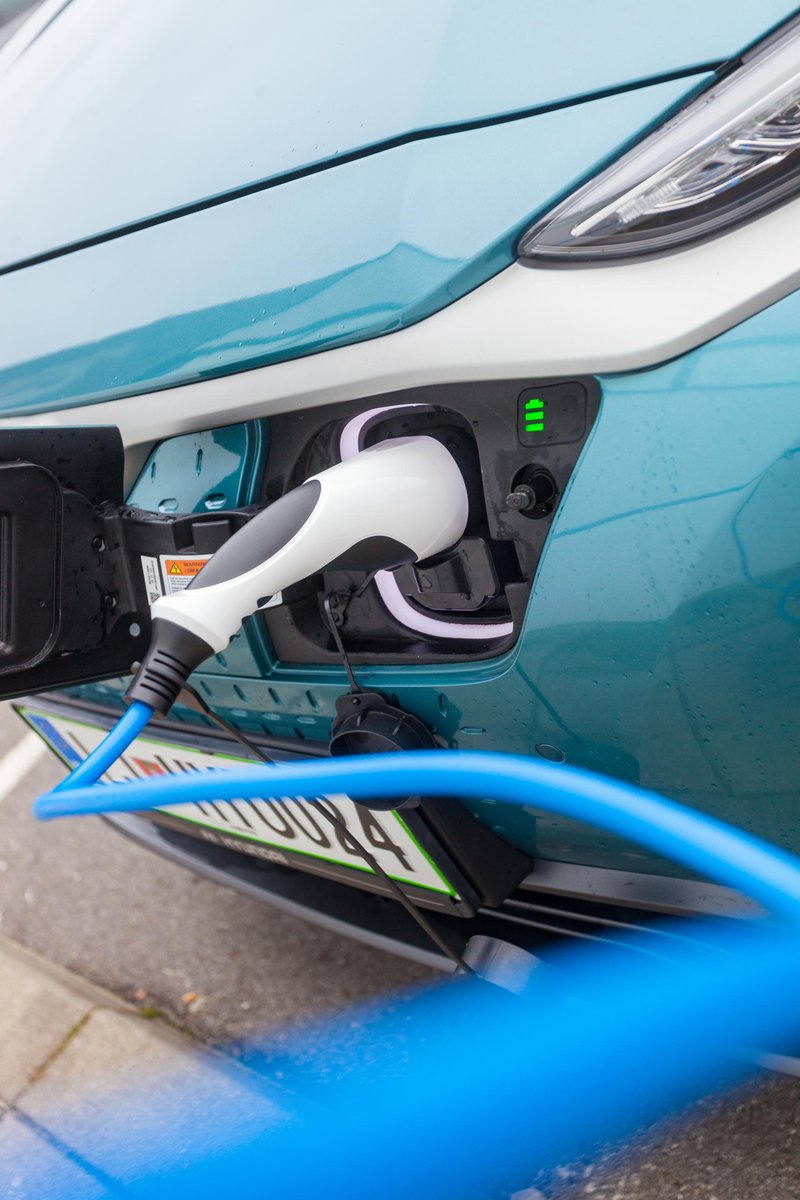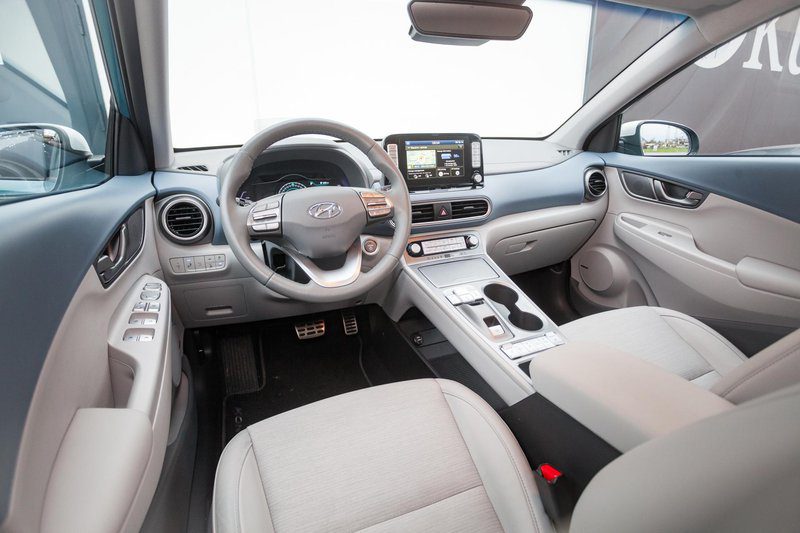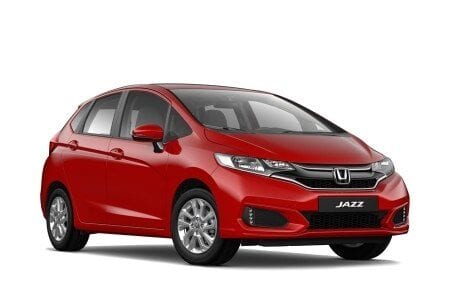
Short Test: Hyundai Kona EV Impression // Tagged
Let's start with what is already known: Horses. Kona E.V. namely, it is not only an electric car, and it was not designed just as an electric car, but the designers at the same time created a classic. We tested this some time ago, for example, with a liter turbocharged gasoline, and by that time we were already satisfied. At that time, we praised propulsion technology (in terms of price) - except for consumption.
The electric version of the Kone also refutes these concerns. Traveling on electricity (with the exception of those charged from fast charging stations) is cheap. (or even in Slovenia at public charging stations other than fast ones, still free). Thus, the cost per kilometer over the entire service life, despite the higher starting price of the vehicle (which has been successfully reduced) EcoFund subsidy in the amount of seven and a half thousand) is at least as affordable as the classic - especially the diesel classic, which is more expensive to buy on petrol - plus the electric ride is nicer and quieter.
Okay, due to the electric drive, some of the noises, such as poorly insulated paths, are louder, but still acceptable. It is hidden under the bottom of the passenger compartment. battery with a capacity of 64 kilowatt-hoursand the electric motor can 150 kilowatts of maximum power.
 Achieve? This, of course, as with all cars, especially electric cars, mainly depends on the driving profile, that is, the type of road, speed, economy and driving skills (when regenerating and predicting traffic). On our normal circle, that is, about a third of the highway, when driving outside the city and in the city, I would stop somewhere on 380 kmmeasured in unpleasant conditions for an electric car: subzero temperatures and winter tires on wheels. Without the latter, I would have climbed over four hundred. Of course: if you drive more on the highway (for example, daily migrants), the range will be shorter, about 250 kilometers, if you adhere to the limits of the highway as much as possible. Enough? Considering the Kona EV can be charged at 100 kilowatt charging stations, which they charge the battery up to 80 percent in just half an hour (for 50 kilowatts it takes about an hour), that's enough.
Achieve? This, of course, as with all cars, especially electric cars, mainly depends on the driving profile, that is, the type of road, speed, economy and driving skills (when regenerating and predicting traffic). On our normal circle, that is, about a third of the highway, when driving outside the city and in the city, I would stop somewhere on 380 kmmeasured in unpleasant conditions for an electric car: subzero temperatures and winter tires on wheels. Without the latter, I would have climbed over four hundred. Of course: if you drive more on the highway (for example, daily migrants), the range will be shorter, about 250 kilometers, if you adhere to the limits of the highway as much as possible. Enough? Considering the Kona EV can be charged at 100 kilowatt charging stations, which they charge the battery up to 80 percent in just half an hour (for 50 kilowatts it takes about an hour), that's enough.
But fast charging stations are an exception when charging electric vehicles, otherwise they are welcome on long trips (from Ljubljana to Milan can be reached in just half an hour stop(e.g. just right for a good espresso and a jump to the toilet), but an exception nonetheless. Most users will charge their car at home – and this is where the Kona received this stellar award.
Its built-in AC charger can charge maximum 7,2 kilowatts, single phase. Actually two minuses. The first one went to Kona, because (excluding charging losses) it is impossible to charge a car at a lower rate - it takes almost nine hours, and at a lower rate - eight hours. If we take into account at least 20% more losses during charging, then such a charge will take at least ten hours. If the car is parked on the street, in the cold or in the heat, there can be even more losses. These are just the facts that need to be considered in electric vehicles.
 Okay, sure, the average user doesn't drain the battery every day, so it doesn't even matter that much - if you run the battery down by half every day (at least 120 miles on the highway), you can easily charge it at night - or not. The fact that Konin's built-in charger is single-phase at 7,2 kilowatts (and three-phase at least 11 kilowatts can't even be paid extra) means that the home network is also loaded during charging.
Okay, sure, the average user doesn't drain the battery every day, so it doesn't even matter that much - if you run the battery down by half every day (at least 120 miles on the highway), you can easily charge it at night - or not. The fact that Konin's built-in charger is single-phase at 7,2 kilowatts (and three-phase at least 11 kilowatts can't even be paid extra) means that the home network is also loaded during charging.
One phase and seven kilowatts is a 32 amp fuse for charging only. An 11kW three-phase charging solution means only 16A fuses. First of all, a single-phase charging of this power means that almost no other device in the house can be turned on. Therefore, it is necessary to limit the charging power in the car (via the settings in the infotainment system), which will of course prolong this. Some users are not bothered by this either (or they will just allow a more powerful three-phase connection and pay quite a lot for it), others will simply look elsewhere. At least at the initial stage, when Kone supplies are not related to needs, this will not be a problem, but it is hoped that Hyundai will solve this problem by rejuvenating the model. However, Kona is not the only one here: these concerns apply to all electric vehicles that are charged from the AC mains using a single-phase on-board charger of this capacity - but it is true that there are fewer and fewer of them, and that they have the opportunity to at least pay extra for charging at three-phase flow.
What about the rest of the transmission? Big. The ride can be very quiet as the chassis is comfortably set up and the response of the electric motor can be quite smooth (despite the abundance of torque). Of course, everything is different, taking full advantage of the opportunities offered by the car - and then it turns out that the position on the road is reliable (which came in handy when you avoided the driver who drove onto the main road without looking around), and the tilt of the body not too big.
 Another small negative: the Kona EV can't drive with just the accelerator pedal. The regeneration can be set in three stages (and also set what level is the default at startup), and at the highest level you can drive almost without brakes - but it would be nice if the car without a brake pedal also came to a complete stop - so driving on the city is much nicer.
Another small negative: the Kona EV can't drive with just the accelerator pedal. The regeneration can be set in three stages (and also set what level is the default at startup), and at the highest level you can drive almost without brakes - but it would be nice if the car without a brake pedal also came to a complete stop - so driving on the city is much nicer.
The test Kona EV had no shortage of safety and assistance systems, but it was a top-of-the-range vehicle. Printing, which also includes digital gauges, active cruise control, navigation (which is a bit unnecessary when Apple CarPlay and Android Auto are connected), a projection screen, and a Krell sound system, so the price is - a little less than 46 thousand up to subsidy is acceptable. Also because the Kona is available or will be available with a smaller battery (40 kilowatt-hours, and will cost five thousand less) for those who do not need such a large coverage and who want to save something. In all honesty, for most potential Slovenian users, a smaller battery is also sufficient, except for longer routes or if you travel a lot on the highway.
In the Kona electric car, Hyundai has managed to combine all the advantages of a crossover (higher seating position, flexibility and, for many, looks) with an electric drive. No, the Kona EV has its drawbacks, but for most potential users, they aren't big enough to keep them from buying. Except for one, of course, this production is not even close to meeting demand.
Hyundai Kona EV Impression
Basic data
| Test model cost: | 44.900 € |
|---|---|
| Base model price with discounts: | 43.800 € |
| Test model price discount: | 37.400 € |
Costs (per year)
Technical information
| engine: | electric motor - maximum power 150 kW (204 hp) - constant power np - maximum torque 395 Nm from 0 to 4.800 rpm |
|---|---|
| Battery: | Li-ion polymer - rated voltage 356 V - 64 kWh |
| Energy transfer: | front wheel drive - 1-speed automatic transmission - tires 215/55 R 17 W (Goodyear Ultragrip) |
| Capacity: | top speed 167 km/h - 0-100 km/h acceleration 7,6 s - energy consumption (ECE) 14,3 kWh / 100 km - electric range (ECE) 482 km - battery charge time 31 hours (home socket ), 9 hours 35 minutes (7,2 kW), 75 minutes (80%, 50 kW), 54 minutes (80%, 100 kW) |
| Mass: | empty vehicle 1.685 kg - permissible total weight 2.170 kg |
| External dimensions: | length 4.180 mm - width 1.800 mm - height 1.570 mm - wheelbase 2.600 mm |
| Box: | 332-1.114 l |
Our measurements
| T = 7 ° C / p = 1.028 mbar / rel. vl. = 55% / odometer status: 4.073 km | |
| Acceleration 0-100km: | 7,7s |
|---|---|
| 402m from the city: | 15,7 years ( 149 km / h) |
| Fuel consumption according to the standard scheme: | 16,8 l / 100km |
| Braking distance at 100 km / h: | 41,2m |
| AM table: | 40m |
| Noise at 90 km / h in 6rd gear | 59dB |
evaluation
The Kona EV has (almost) everything: performance, range, even a reasonable price point. If Hyundai corrects any other shortcomings during its rejuvenation, it will be an extremely interesting choice for those who want to get a great electric car for a long time.
We praise and reproach
battery and motor
form
infotainment system and meters
single phase charging
ni 'one-pedal drivinga'
